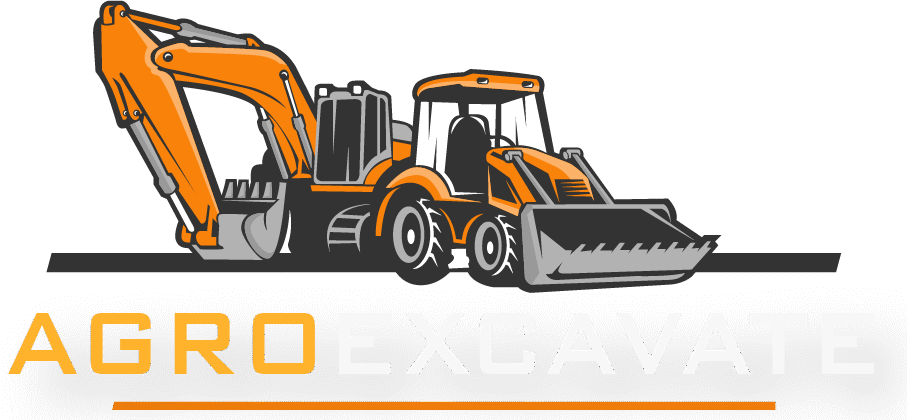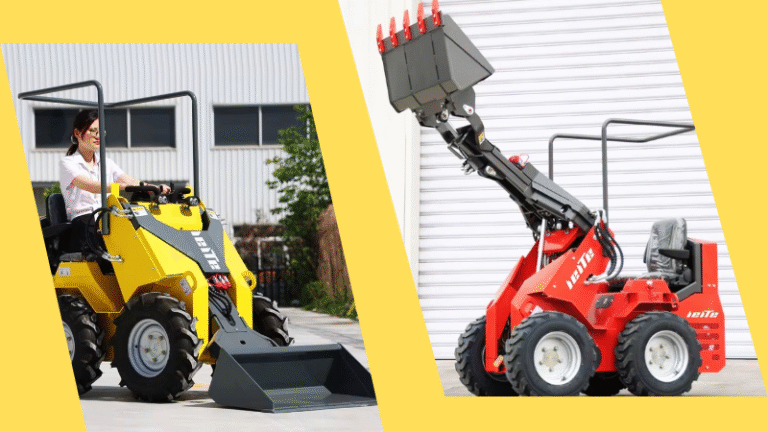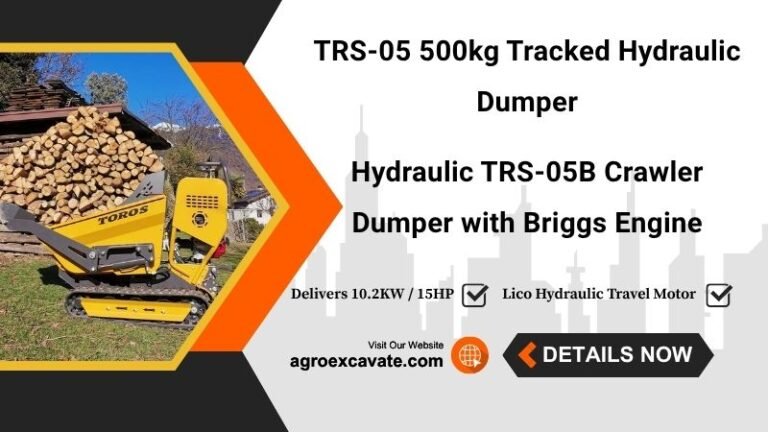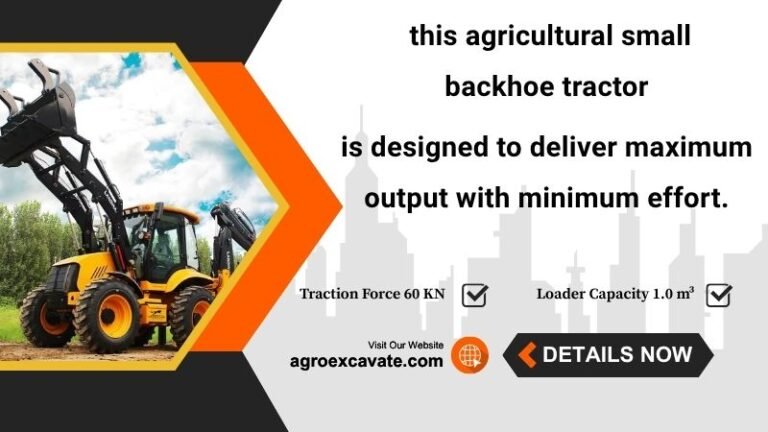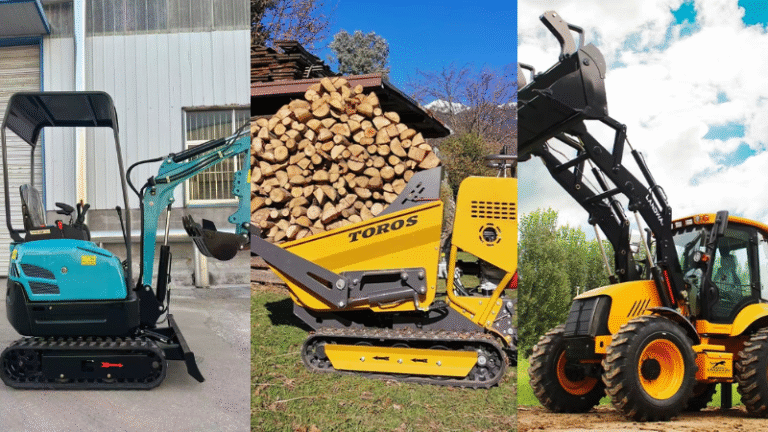How to Choose the Right Compact Excavator or Loader for Your Project
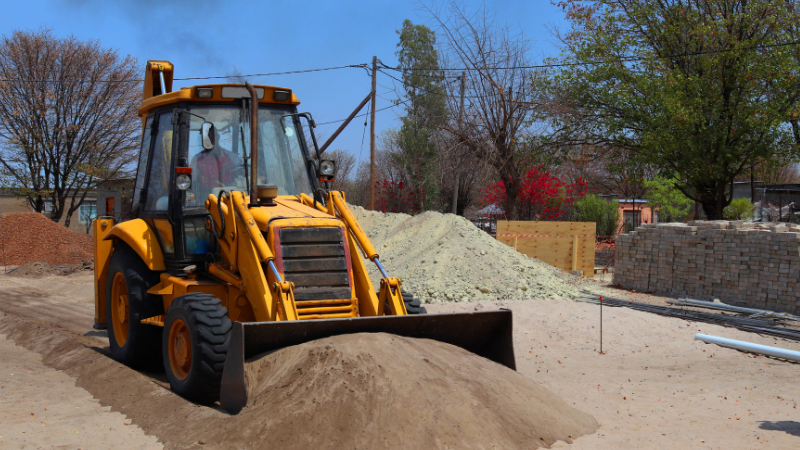
Selecting the right compact excavator or loader is crucial for contractors and farm managers. The proper equipment can significantly improve project efficiency, cost-effectiveness, and overall results. However, choosing the wrong machinery may lead to delays, increased operational expenses, and unsatisfactory outputs. This guide provides a comprehensive breakdown of how to select the right equipment based on project type, soil conditions, and output requirements. Whether you’re managing a farm, construction site, or excavation project, this guide will help you make an informed decision.
Factors to Consider
1. Project Type
Understanding your project requirements is the first step. Different tasks demand different equipment capabilities.
- Trenching: If your primary goal is trenching, a compact excavator with a long-reach digging arm and specialized bucket attachments will serve best. Look for models with deep digging depths and high maneuverability.
- Grading: For grading work, prioritize loaders with precision blade controls and balanced weight distribution. Compact track loaders are often preferred for fine grading tasks.
- Material Handling: Tasks like moving bulk materials—such as gravel, dirt, or crops—require equipment that offers high load capacities and quick cycle times. Agricultural loaders excel in these situations due to their operational efficiency.
2. Soil Conditions
The type of soil at your project site dictates the performance of your equipment.
- Clay Soil: Clay is dense and sticky, causing standard excavators to bog down. When working in these conditions, opt for compact excavators designed with high traction strength and advanced undercarriage systems for smooth operation.
- Sandy Soil: Sandy soils require wide-track equipment to prevent sinking. Compact track loaders with enhanced floatation are better suited for maneuvering on loose, granular surfaces.
- Rocky Terrain: For rocky or compacted soil, prioritize machines with reinforced digging arms and buckets made from abrasion-resistant materials.
3. Required Output
Matching the equipment’s capacity to your project demands ensures streamlined operations and prevents unnecessary expenditures.
- Small-Scale Tasks: Residential landscaping or acreage management may only require compact models with standard attachments. These are cost-effective and fuel-efficient for lighter tasks.
- Large-Scale Projects: Farms, construction sites, or excavation requiring substantial digging and material movement demand heavy-duty compact excavators or high-capacity loaders. Consider models with turbocharged engines and load-sensing hydraulic systems for better output capacity.
Case-Based Recommendations
Best Compact Excavators for Clay Soil
For clay-rich areas, consider machinery like the Kubota KX040-4 or Cat 306 CR. These models offer superior traction, stability, and engine power to withstand difficult soil conditions. Advanced features like auto-idling systems also improve fuel efficiency during prolonged operations in heavy clay.
Agricultural Loaders for Heavy Loads
When handling heavy loads like bales of hay, feed, or gravel on farmlands, look for machines such as the John Deere 324G Skid Steer or Bobcat T770 Compact Track Loader. Their stability, high load capacities, and specialized agricultural attachments make them ideal for demanding farm work.
Equipment for Mixed-Use Projects
For contractors juggling a mix of trenching, grading, and material movement on varied terrain, versatile models like the Takeuchi TL12R2 Track Loader are recommended. With customizable attachments and robust engines, these serve as an all-in-one solution.
ROI Calculations
Buying vs. Renting Equipment
The decision between purchasing and renting depends on the project’s scale and duration. Here’s how to analyze ROI:
- Ownership Costs: This includes the initial purchase price, insurance, maintenance, and depreciation. Compact excavators cost approximately $50,000–$100,000, but owning is cost-effective for contractors with long-term and frequent usage needs.
- Rental Costs: Renting compact excavators costs $300–$500 per day or $1,500–$3,000 weekly. Renting is financially viable for short-term or one-off projects.
For example, if your yearly operational time exceeds 1,000 hours, purchasing may provide a higher ROI. Calculate ROI using this formula:
ROI (%) = [(Revenue or Savings - Equipment Cost) / Equipment Cost] × 100
Excavator Rental Cost Efficiency
For short-term work, rental options yield better cost efficiency. Rentals eliminate upfront costs and allow access to modern, well-maintained machinery. Search terms like “excavator rental cost efficiency” can help locate affordable rental providers in your area.
Industry Standards
Equipment Performance and Durability
When investing in compact excavators or loaders, ensure they meet industry benchmarks like:
- Fuel Efficiency: Aim for models with energy-efficient engines to reduce long-term costs.
- Hydraulic Power: Machines with higher PSI (pounds per square inch) ratings boast better lifting and digging capabilities.
Safety and Compliance Standards
Operators must comply with OSHA regulations, such as:
- Installing rollover protective structures (ROPS) on loaders.
- Ensuring all equipment has proper safety certifications.
- Providing mandatory operator training to ensure safe handling.
Key Takeaways
Selecting the right compact excavator or loader simplifies operations, enhances productivity, and protects your investment. For clay soil projects, opt for high-traction compact excavators like the Kubota KX040-4. When managing heavy agricultural loads, machines like the John Deere 324G Skid Steer are excellent choices. Always evaluate ROI factors—renting is ideal for short-term needs, while purchasing works for long-term use. Lastly, ensure your equipment adheres to safety and performance standards for a hassle-free experience on-site.
By understanding project specifics, soil types, and necessary outputs, contractors and farm managers can confidently select machinery that delivers optimal results.
